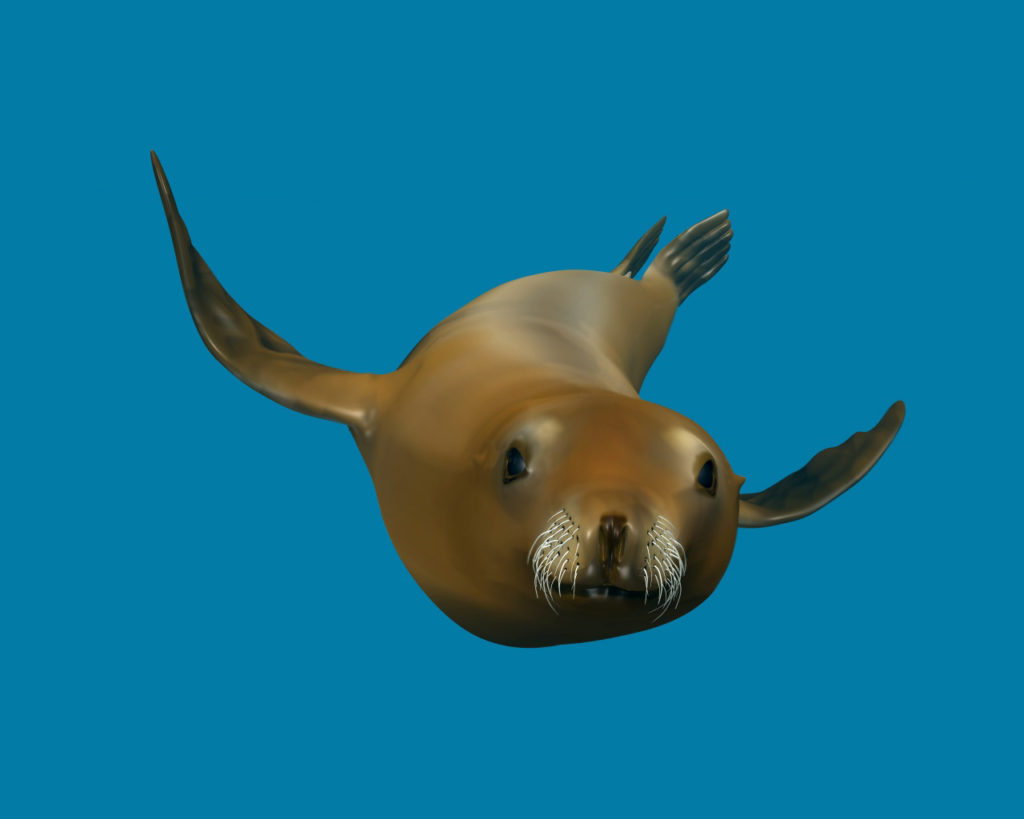
I recently pulled this model out of mothballs and decided to give her some updates. I made the original while studying Marine Biology at UC Santa Cruz. They have several research animals at the school, so I was able to hang out with some of them up close, make observations of how they move and take photos for reference.
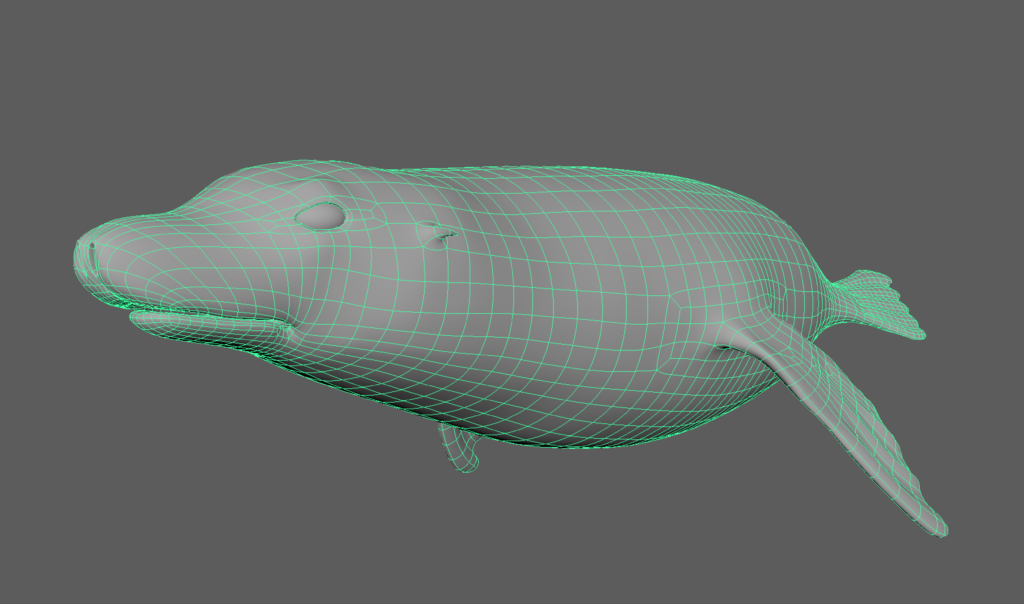
The first step was to re-work the mesh, with some smoother edge-loop reduction flows around tricky areas like the eyes and mouth. I also removed any triangles that were present so the whole thing is now only quads.
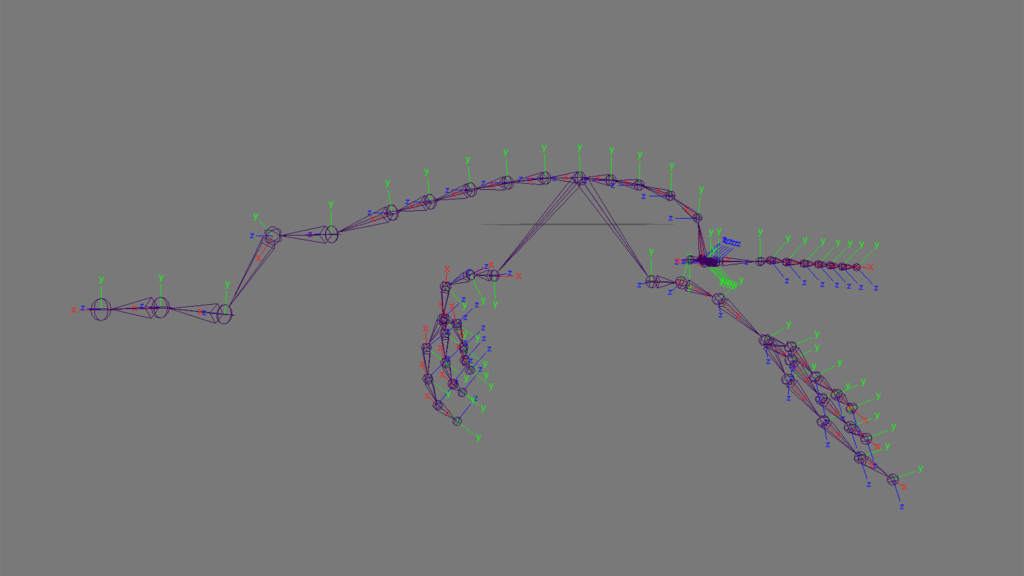
Next I made a brand new skeleton, and meticulously oriented each joint so that, hopefully it will animate with fewer glitches and weirdness. (All rotations and rotate axis values are 0,0,0).
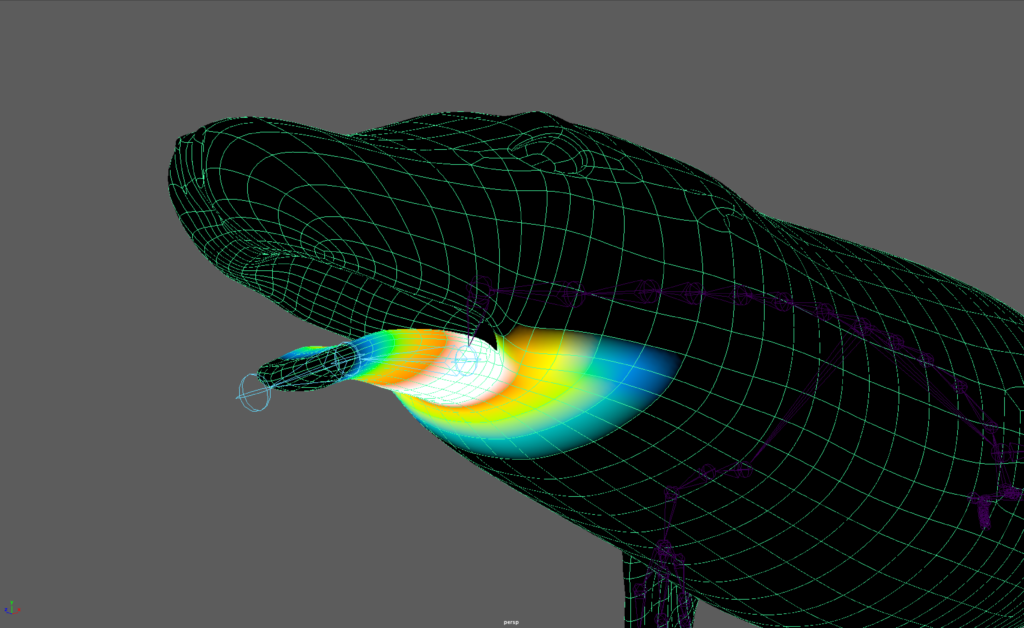
I mostly adjust skin weights numerically using the attribute spread sheet, but sometimes it’s fun to paint them on with a brush.
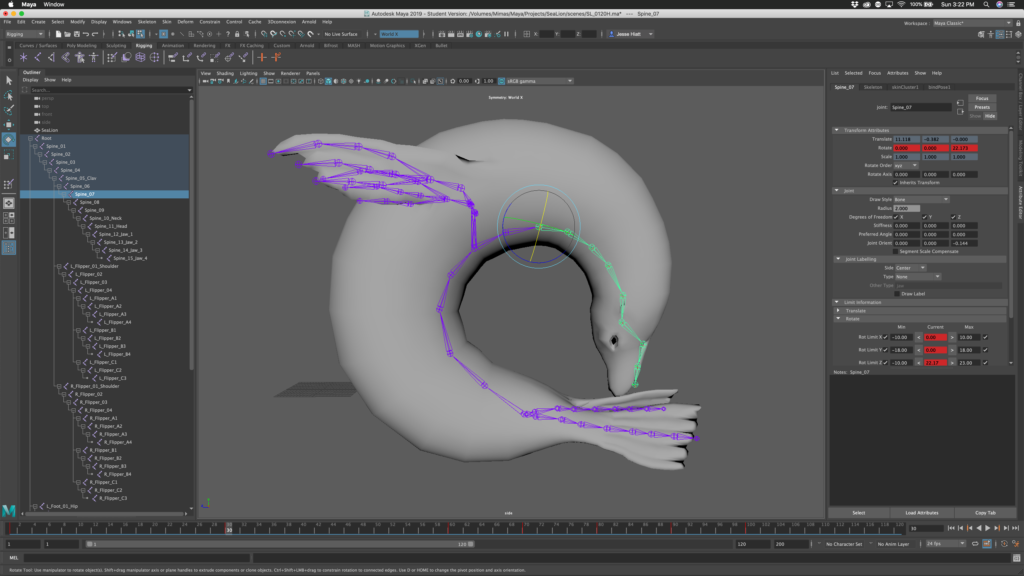
Moving it around to see what it can do, and looking for places where the skin weights need to be fiddled with. Also testing how far the joints can be rotated, and setting the limits.
Adding some fun stuff like blend shapes for blinking and other expressions.
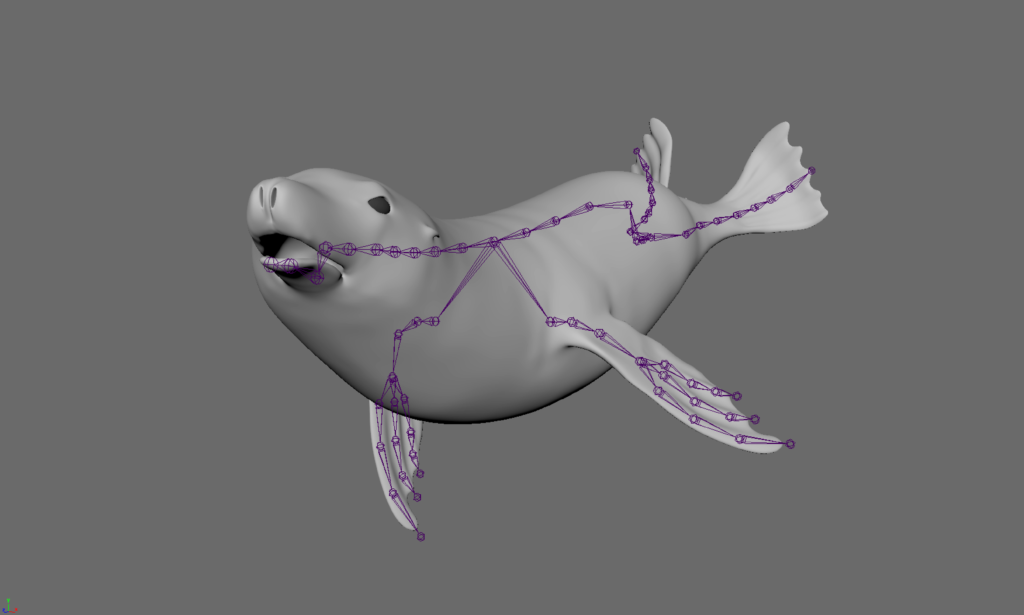
It’s finally starting to come together, and almost time to give her a new paint job and start trying some animations…
Here’s a quick rundown of some of the features I added to the animation rig…

This was my original motion study of the Sea Lion’s stroke. The drawings on the left were by S.J. Feldkamp and are as close as I could get to an official scientific record of how they move. The images on the right were frames from the animation I did based on that reference. Of course if you’ve seen them in the water, you know they rarely swim in a straight line! But this is a good starting place for realistic motion of the flappy parts….